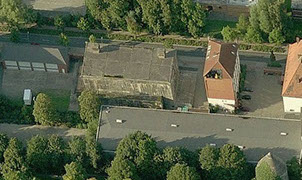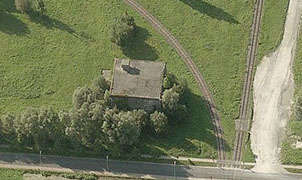Naval Base Wilhelmshaven
Wilhelmshaven was and is one of the German navy's most important and largest bases. At the "Kaiserliche Werft Wilhelmshaven" Yard the battleship Scharnhorst was built between 1936-1939. During the war, Wilhelmshaven was bombed several times and the German navy therefore built seven navy protective bunkers T750 to protect their crews.
The base was repeatedly exposed to large air attacks, the first in January 1941 and the last in October 1944. One of the biggest attacks took place in February 1943, when 177 aircraft bombed the large ammunition depot in the southern part of the port. Much of the ammunition exploded and the explosion destroyed a large part of the yard and the city.
Already in 1940, the German navy had plans to build a large U-boat bunker in the harbor, but with the conquest of France in 1940, these plans were changed. In 1944 plans were again usable and construction of the bunker wespe (wasp) started. The Wespe bunker should produce modules for Germans newest U-boat, type XII. The production of this type of U-boat was unusual. It consisted of nine modules which was prepared in different parts of Germany. Then the modules was barges shipped to assembly plants where they were welded together and the U-boat ready-mounted.
One of these assembly plants were just 50 km. inside the river Weser, namely by Farge. The bunker came never to be completed and the 6th May 1945, it was with the rest of the city conquered by Polish and Canadian troops.




© Picture by Holger Raddatz
© Picture by Holger Raddatz
<
>
“ I was at Prince Rupert School - 1970-1972. My first house was Mountbatten Boys, opposite Churchill, then moved to Shackleton House on the Fliegerdeich for my second year. I believe the bunker situated opposite to Nelson was demolished earlier this year, leaving the one nearest the main entrance as, quite probably, the sole example of the 750 Manshaft Bunker. ”
Geoffrey Pickles
“ The top two pictures are of bunkers on the site of the old U boat base and training barracks. In 1947 the site was used as a boarding school for children of the British forces stationed in Germany. I went to school there from 1956 - 1959. The school moved in 1972 and the site was demolished in 2014. ”
John Leggett





